HIGH DOOR EFFORT (REPAIR PROCEDURES)

SUBJECT: SLIDING DOOR EFFORT (REPAIR PROCEDURES)
VEHICLES AFFECTED: 1986-93 "M/L" VANS
THIS BULLETIN SUPERSEDES AND REPLACES CORPORATE BULLETIN REFERENCE NUMBER 161505." THIS BULLETIN IS BEING REVISED TO CHANGE TITLE AND TO CLARIFY THE CONDITION STATEMENTS.
Owners of some 1985-93 WL vans may comment that a higher than normal effort is required to move the sliding door. This may be the result of one or more of the following conditions.
Important: Before proceeding to repair procedures clean all tracks and rollers and re-lubricate with GM P/N 1052497 or equivalent and retest for condition.
CONDITIONS:
---------- 1. The door is hard to open (Figures 1 and 2).
2. The door will not release or is difficult to release from the hold open position (Figure 3).
3. The door will not or is difficult to move out of the opening (Figure 4 and 5).
4. The door is hard to close (Figures 1, 2 and 6)
5. The door chatters or will not glide smoothly (Figure 7 and 8)
SERVICE PROCEDURES:
Note: For assistance in performing the following service procedures, refer to section 10A1 doors in the appropriate service manual.
Condition 1
The door is hard to open.
A. The rear striker is too high or too low. Look for witness marks on the door striker or on the rear latch. If witness marks exist, then adjust the rear striker upward/downward to gain flushness and alignment to the body feature lines.
B. The centre roller track is misadjusted. The door may drop or raise at the rear or may be hard to close as a result of the centre roller track being misadjusted. To correct the condition loosen the centre track bolts and move it upward/downward as required or reward as required.
C. The locators are too high or too low. Close the doors while observing the feature line on the door and on the body of the vehicle. If the feature line moves up or down, then adjust the lower locator, and/or lower roller bracket upward/downward as required. Adjust the lower locator first, then readjust the lower roller bracket.
Condition 2
The door will not release or difficult to release from hold open position.
A. The lower cable release is misadjusted. To repair loosen the screw on the lower roller arm and pull on the release cable to remove any existing slack, and retighten the screw. This will allow the release to disengage at its earliest point.
Condition 3
The door will not or is difficult to move out of the opening.
A. A new weatherstrip has been released into production. The new weatherstrip is similar to the old weatherstrip, except for the addition of a low friction coating to reduce door to seal adhesion.
P/N Description --- ----------- 15958402 Weatherstrip assembly RR S/D
Vehicles built after the following VIN breakpoints have the new weatherstrip incorporated into production.
Chevrolet MB129736
GMC MB509686
A. A new sliding door assist spring (GM part number 15683581) has been released into production. The spring will allow the door to come out of the opening using less effort. Vehicles built after 1992 SOP will have the new spring incorporated into production.
o Support the door with a floor jack or equivalent.
o Remove the bottom two door lock assembly screws and loosen the top door lock assembly screw. Swing the door lock assembly out of the way.
o Squeeze the hinge pin retainer and push the pin upward from the bracket assembly to allow clearance to inset the spring.
o Install the spring on the bracket assembly. Replace the pin through the centre of the spring while making sure that the retainer on the centre roller bracket hinge pin is completely engaged below the bushing.
o Re-install and tighten the door assembly screws.
CONDITION 4
The door is hard to close.
A. The rear striker is too far inward. Adjust the rear striker outward while checking for flushness.
Note: The rear door striker should not be removed.
B. The door is too high or too low in relation to the opening. Look for witness marks on the inside of the pockets of the locator holes and the rear striker. Adjust the lower roller bracket upward/downward as required. Adjusting the lower roller bracket upward will lower the door, adjusting the lower roller downward will raise the door.
C. The door header clearance is too small. Remove the roof rail weatherstrip and close the door. If the closing effort improves, reform the header outboard for additional clearance.
CONDITION 5
The door chatters or won't glide smoothly.
A. The upper roller track is out of adjustment. Reform the upper roller bracket to eliminate any vertical loading on the roller. The roller must not contact the upper or lower portion of the track.
B. The upper roller bearing or track is not smooth. Remove any burrs from the bearing and/or track as necessary.
C. The front of the track is narrower than the roller. Finesse the track until the track accommodates the roller.
WARRANTY INFORMATION:
For vehicles repaired under warranty use:
Operation Description: Labour Time: --------------------- ----------- * Condition 1 0.5 hrs. Condition 2 0.2 hrs. * Condition 3 0.9 hrs. Condition 4 0.3 hrs. Condition 5 0.2 hrs.
* When using conditions 1 and 3 together, reduce the total labour time from 1.4 hours to 1.1 hours to account for overlap.
Note: Labour Operations are coded to base vehicle coverage in the warranty system.
**BULLETIN REFERENCES:
Corporate Ref. 161505
General Motors of Canada 91-2-237 Chevrolet Division 91-369-10 GMC Truck Division 91-10-120
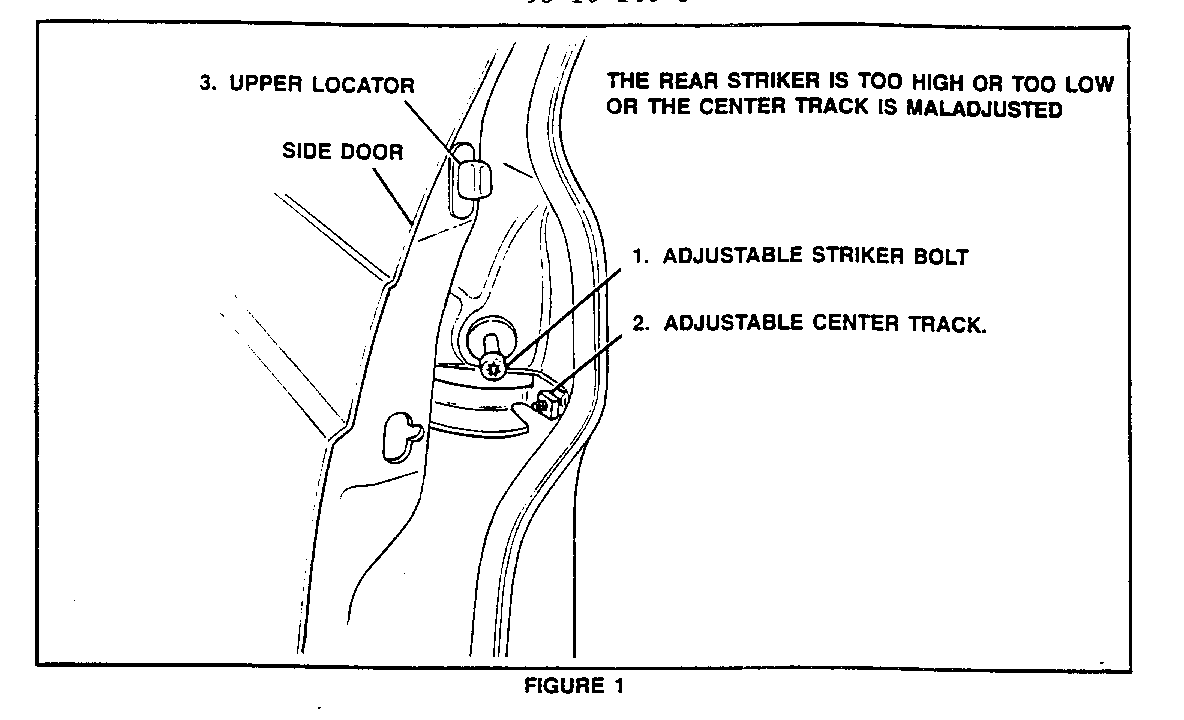
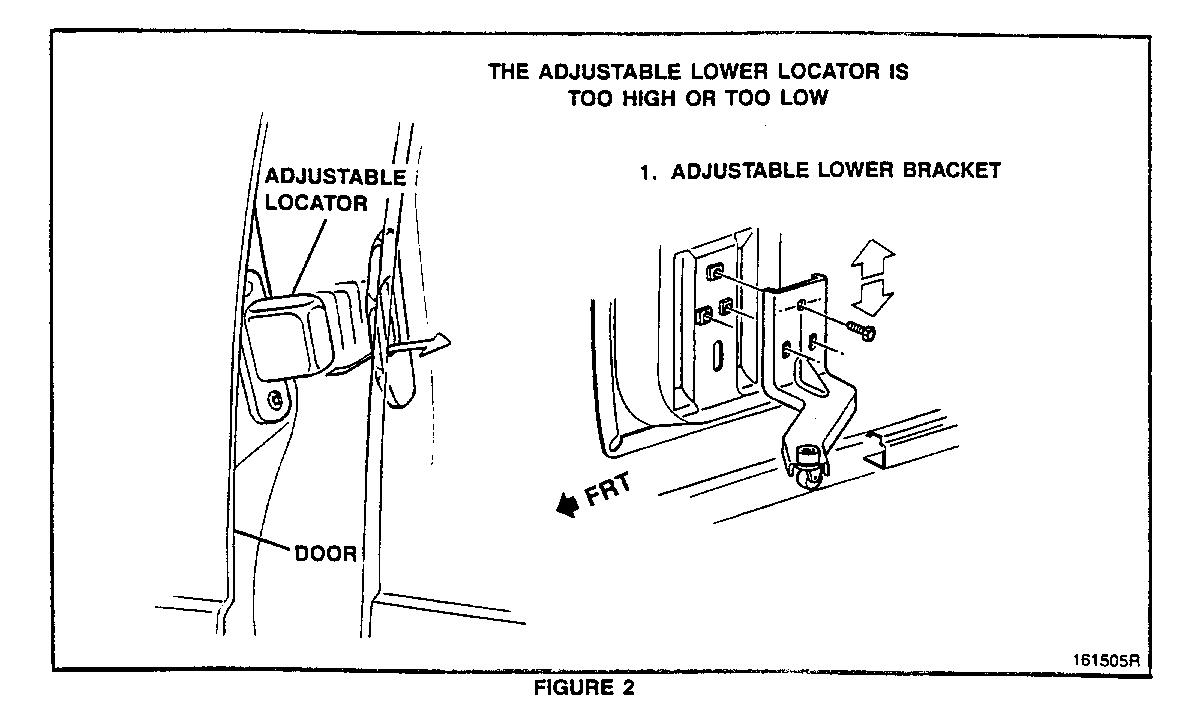
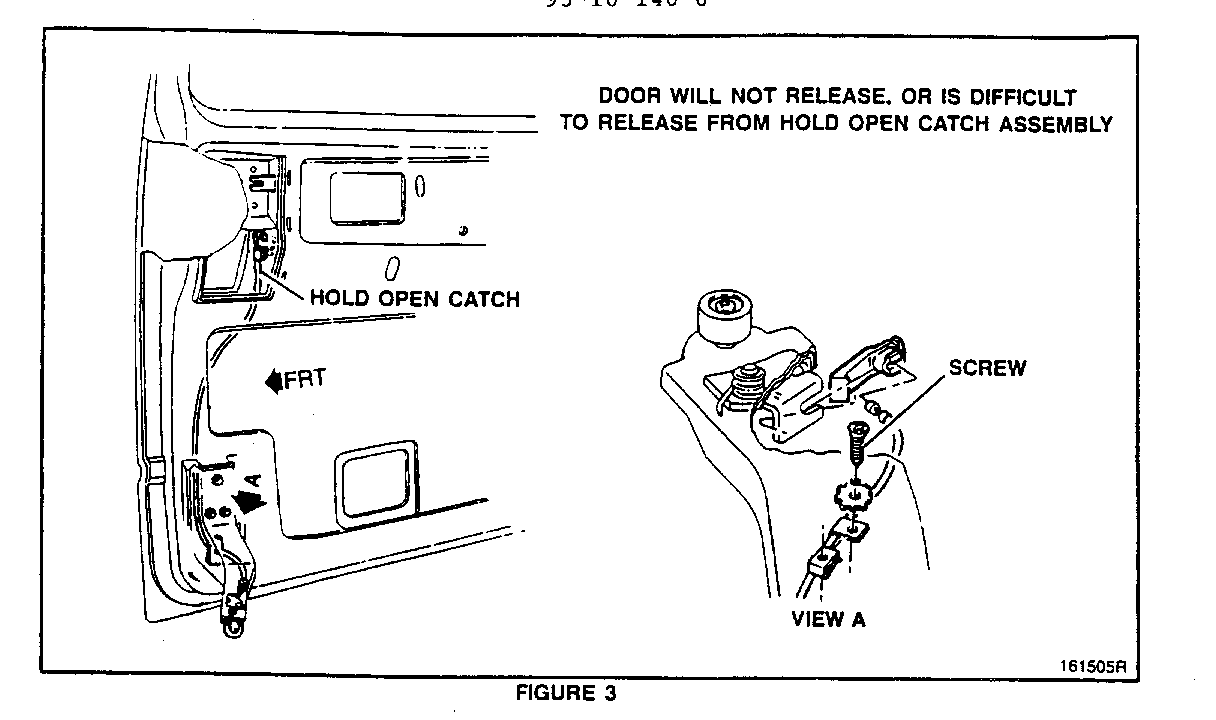
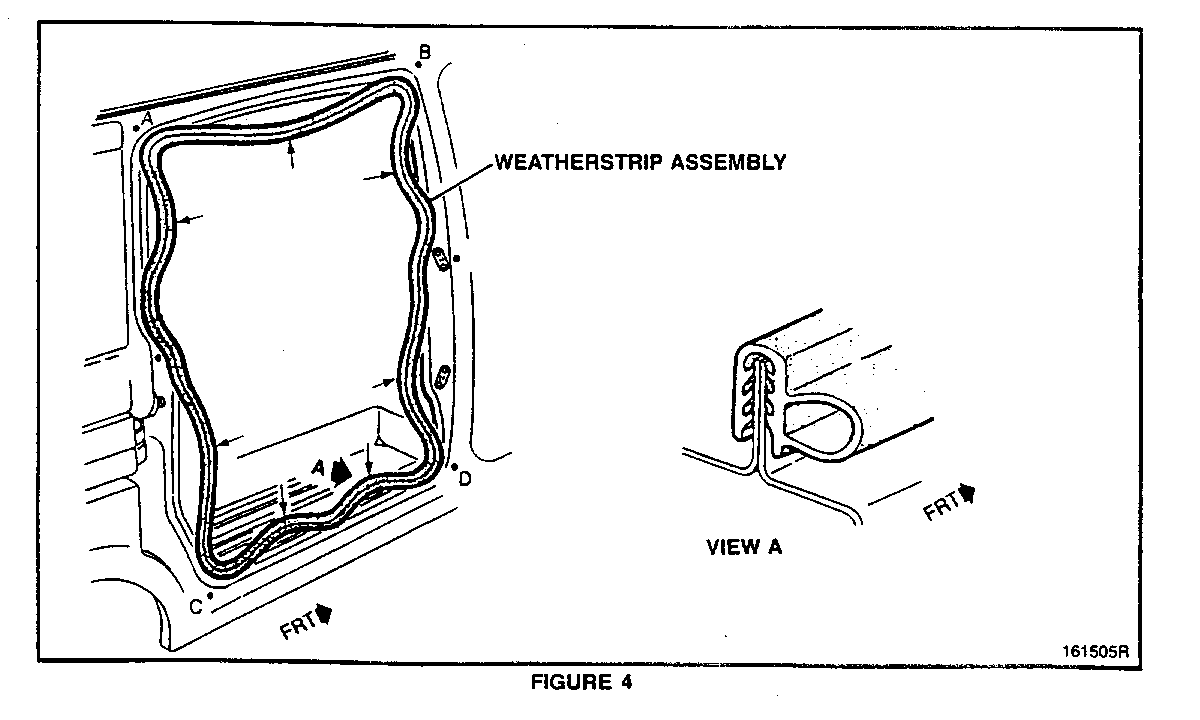

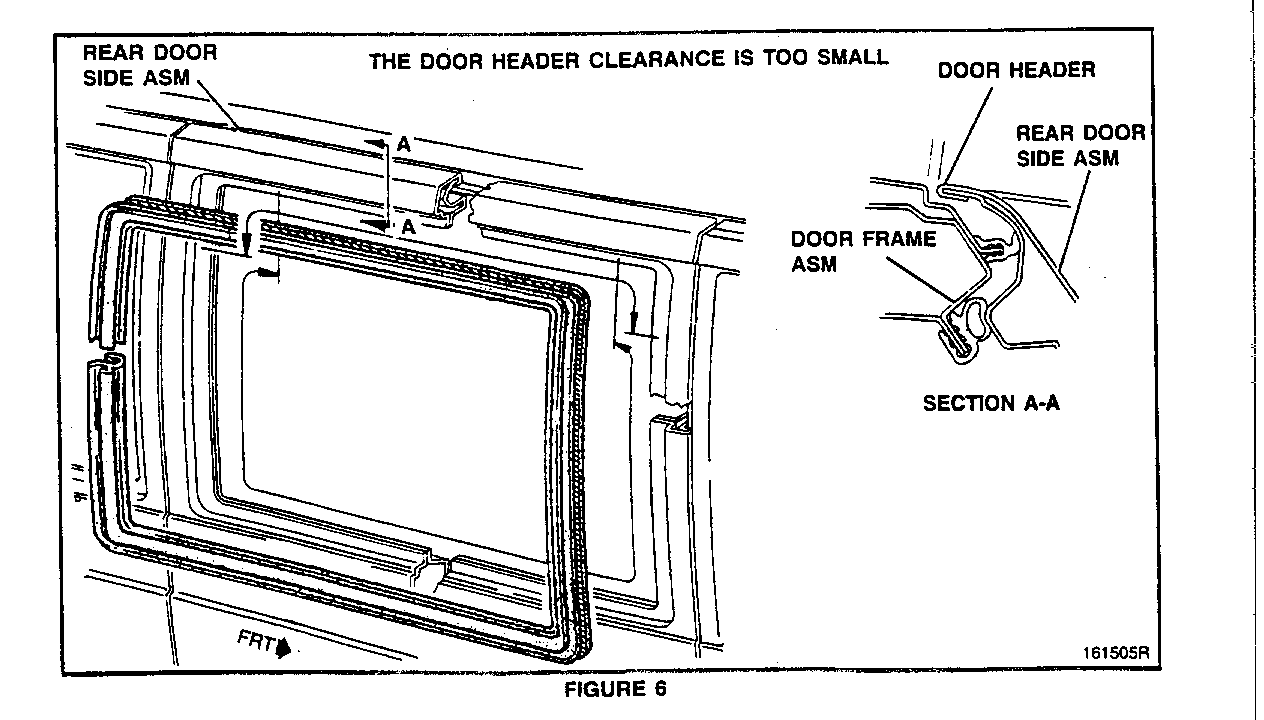
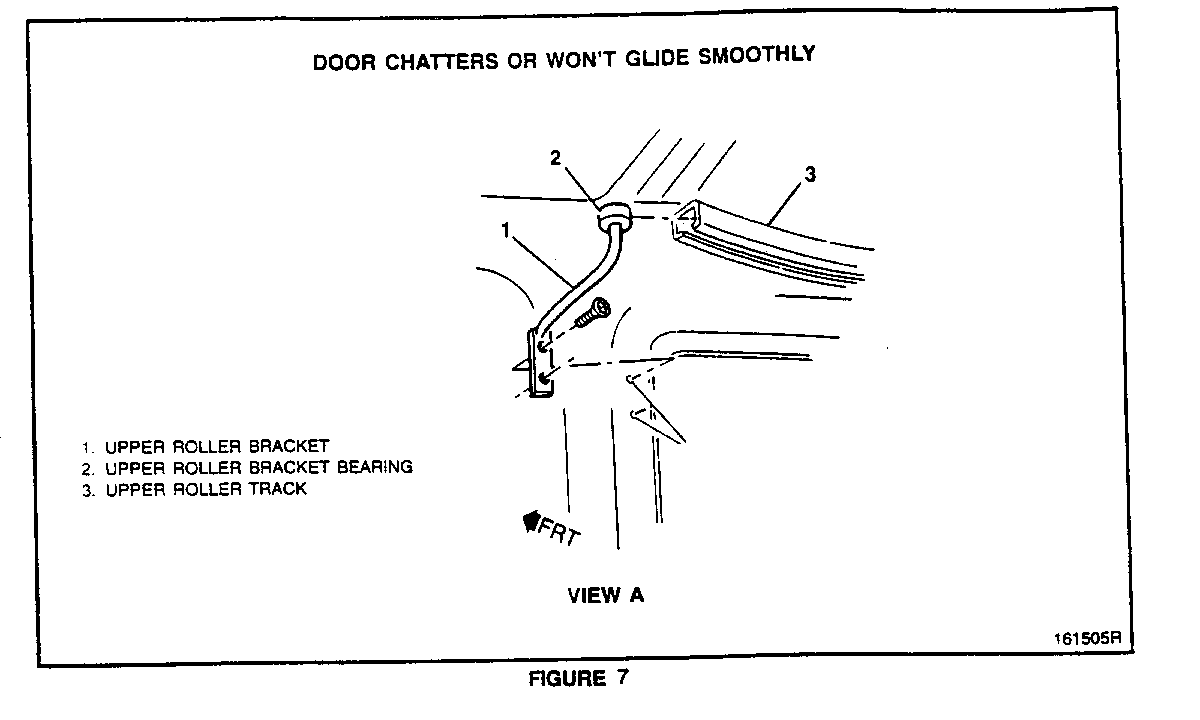
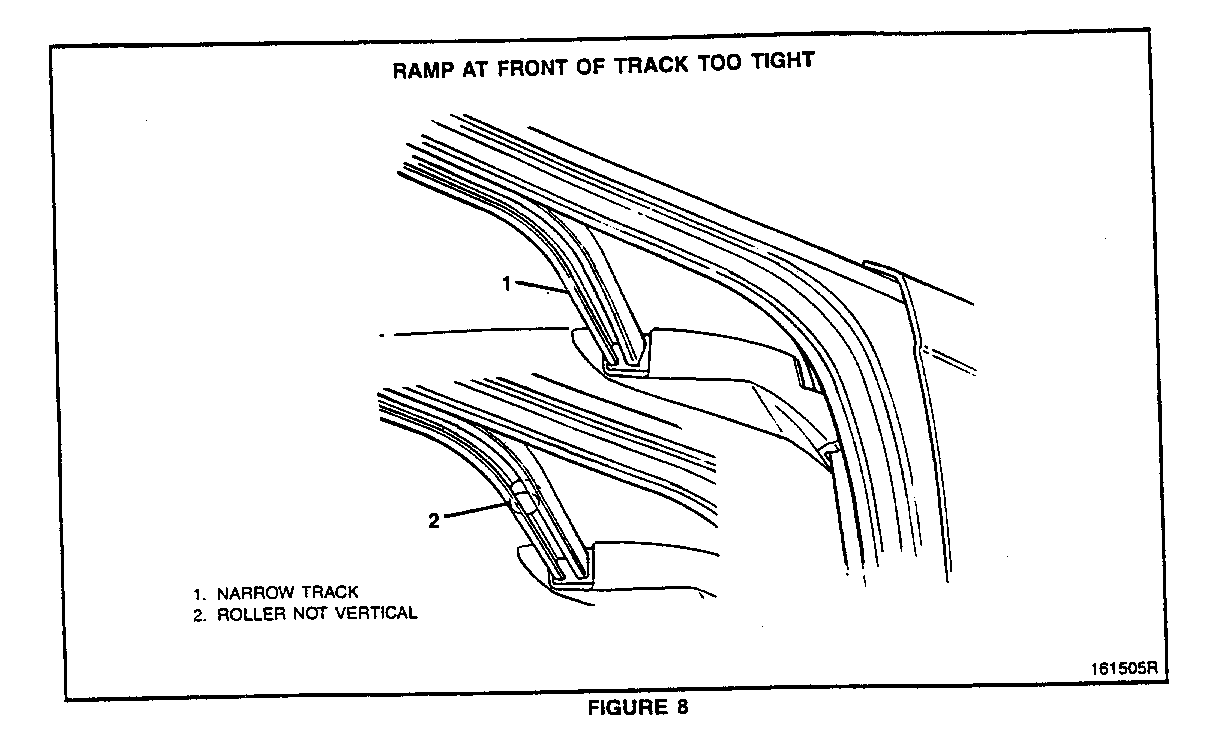
General Motors bulletins are intended for use by professional technicians, not a "do-it-yourselfer". They are written to inform those technicians of conditions that may occur on some vehicles, or to provide information that could assist in the proper service of a vehicle. Properly trained technicians have the equipment, tools, safety instructions and know-how to do a job properly and safely. If a condition is described, do not assume that the bulletin applies to your vehicle, or that your vehicle will have that condition. See a General Motors dealer servicing your brand of General Motors vehicle for information on whether your vehicle may benefit from the information.
